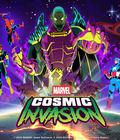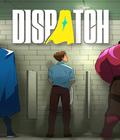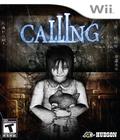For a console that seems to be pigeonholed by the public as a family-oriented machine, the Nintendo Wii has a decent amount of games in the horror genre. The Resident Evil series, for example, has no less than five games on the system. Those looking for pure action can depend on Dead Space: Extraction, while more story-driven horror can come from Silent Hill: Shattered Memories. Fans of campy horror can choose between The House of The Dead: Overkill or Obscure: The Aftermath. Even Japanese horror fans have something with Ju-On: The Grudge and, for those who can import it, Fatal Frame 4. Seeing that there is an audience for the genre on the Wii, Hudson decided to join in with its first horror game, Calling. Unfortunately, the game lacks in both the fright and the gameplay departments.
The rumors have been going around of a mysterious Web site called the Black Page. To the average person, the site is nothing more than a blank page with a small hit counter at the bottom. Those with a taste for the occult, however, will find that it hides a special chat room. Those who dare enter the chat room will receive a mysterious phone call before the counter starts. Tonight, four people will cause the counter to go up as they enter a place known as the Mnemonic Abyss. Their mission is to escape the abyss and the ghosts that inhabit it.
Like most horror games, the majority of the gameplay relies on environment exploration and puzzles. In typical horror game fashion, the environments are dark and dingy, and the puzzles make little to no logical sense. What's interesting here is that each environment is only connected to one another because they are all either related to something that happened to one of the main characters or are a hotbed of paranormal activity due to the events happening there. Without a city or town to connect everything together, it wouldn't make much sense that the game can quickly go from an old house to school to the hair salon to the Internet cafe.
There are two things that do make this different from other horror games currently on the system. The first is combat, or lack thereof. Like Silent Hill: Shattered Memories and Ju-On: The Grudge, the protagonists cannot use weaponry or magic to defeat their enemies. Your only option in the game is to run away from the enemy, and while that works most of the time, there will be a few moments when the game forces you to stay in one spot to face down the ghosts. When this happens, the only thing you can do is either die or try to break free of their hold to make them disappear for a while. The other difference is the phone. Aside from being a communication tool for the dead, it becomes your own sound recorder and camera for clues. It also acts as a transport from one environment to another, since you have to call up that environment's phone number in order to get there quickly.
The biggest problem facing the game is the horror aspect. To put it bluntly, it just isn't scary, especially if you've seen other Japanese horror films before. Faces randomly flashing on-screen, objects falling randomly, and shadows passing by quickly are quite common in the game. Scary little girls, moving dolls, ghostly phone voices, ghosts of dead relatives, and long strands of black hair are all present in the game as well. Japanese horror fans will get a kick out of the homages here while newcomers will be rightfully scared. The problem is that all of these things occur within the first two levels of the game so with nothing new in later levels and without proper pacing of said elements, you begin to expect any combination of these things to happen, significantly dampening the scare factor.
Another factor that transforms the game from awesome to tedious would be the overall game structure. You can finish only a part of the game before the credits begin to roll. Stopping your game here would only get you a faint understanding of what's going on, and the only way to fill in those gaps would be to play the game again with new chapters unlocked. It feels like a cheap way to get more playtime out of the game since there is no other way to see these chapters and get the complete story with just one playthrough.
The controls work well enough. Everything on the Nunchuk handles movement of some sort, whether it be running or ducking. The Wii Remote acts as both a flashlight and cursor to indicate which objects can be interacted with, and it does a good job of being as responsive as possible to the character's movements. The game does a better job than most Wii first-person shooters in terms of correctly following the remote and knowing when the cursor is at the right spot to move the camera. About the only time this doesn't happen is when the user gets in and out of searching mode, but a quick flick away from the screen puts things back in order. Getting out of a ghost hold requires vigorous Wii Remote shaking, and while it works, it never feels like your shaking is actually doing anything because of the lack of vibrational feedback during the attacks. The same goes for the A button prompt, which is supposed to reduce those moments of shaking. Since you never know exactly when to hit it, you'll end up mashing the button and flailing around helplessly anytime an apparition appears.
The game is fairly good in the graphics department. The walls and other objects in the environment look fine, and the textures don't look too bad when viewed up close. The character models for the protagonists have an interesting early CG/anime mix going for them, and while it works well enough in regard to their bodies and facial features, their joints and hands don't look too good. This is also true of their lip movements during cut scenes, which seems to match the English dialogue well but looks horribly dubbed when they speak Japanese; this is a bit odd, considering that this is a Japanese game.
The same criticisms for the heroes can also be said for the ghosts, though it is tiresome to see them all sport sunken eye sockets. They also have the same animations, so the ghostly old man will attack you with the same animation frames as a dead schoolgirl would. A little variety here would have been nicer.
There are a few bigger faults, though, and they have to do with lighting and subtitles. For the most part, you'll need to acquire flashlights early on in the game if you want your characters to be able to analyze clues or search their environments more thoroughly. However, the brightness is already defaulted to a point where you can actually see everything quite clearly so the need for a flashlight simply becomes a formality. Secondly, the game does not subtitle everything. It's understandable to omit greetings like "Hello," since you can quickly gauge what is being said even if you don't know the language basics. However, the camera focuses on some Japanese signs but no English subtitles are provided, making the scene and extended camera shots lose meaning. There are also a few subtitles that just aren't translated correctly at all on phone pictures. People might understand why there's a picture of an exit on the phone, for example, but if the subtitle for the picture is pure gibberish, the clue ends up being more confusing than helpful.
Sometimes, less sound is better than more sound, and that certainly is the case here. With the exception of ghost encounters and a few cut scenes, there is no music ever playing in the game itself. When the music does play, it is the same tune designed to either heighten the effect of a ghost appearing or alert you that you're stuck in a situation where you must coax the spirit into revealing itself. It would have been nicer if the music varied depending on location and situation, but the way it is now definitely makes the scare tactic stale after you've heard it a few times. The sound effects are rather good and do a nice job of making an echo effect that only reinforces the idea that each area is empty and devoid of life. The use of the Wii Remote speaker as a mock cell phone is also well done, as voices come through rather clearly on the device despite the speaker's known limitations. As for the voices, they are available in Japanese and English, and both sound average at best. A few of them do overdo it, especially some of the voices on the phone, but the overacting doesn't occur often enough to make the whole thing feel cheesy.
Calling has all of the technical chops to become a decent horror game. The sounds and graphics are fine, while the controls aren't all that cumbersome. Unfortunately, the story just isn't scary so the game feels like it drags on. If you can't stand to miss any horror game release, then your best bet would be to rent this title. Otherwise, leave this one alone and keep hoping that someone else will bring out a better example of good Japanese horror to the Wii console.
Score: 5.5/10
More articles about Calling











 Calling brings new heights to the horror genre, with a breath-taking control system that immerses the player into its nightmare scenario. The player begins the game trapped in a strange room, with the Wii Remote doubling as the on-screen protagonist’s mobile phone. Using a torch to scour the dimly-lit area, players will also receive mysterious calls to their handset, which are answered by raising the Wii Remote to their ear. From this simple basis, Calling then ramps up the fear, as a ghostly voice speaks directly to the user…
Calling brings new heights to the horror genre, with a breath-taking control system that immerses the player into its nightmare scenario. The player begins the game trapped in a strange room, with the Wii Remote doubling as the on-screen protagonist’s mobile phone. Using a torch to scour the dimly-lit area, players will also receive mysterious calls to their handset, which are answered by raising the Wii Remote to their ear. From this simple basis, Calling then ramps up the fear, as a ghostly voice speaks directly to the user…





































